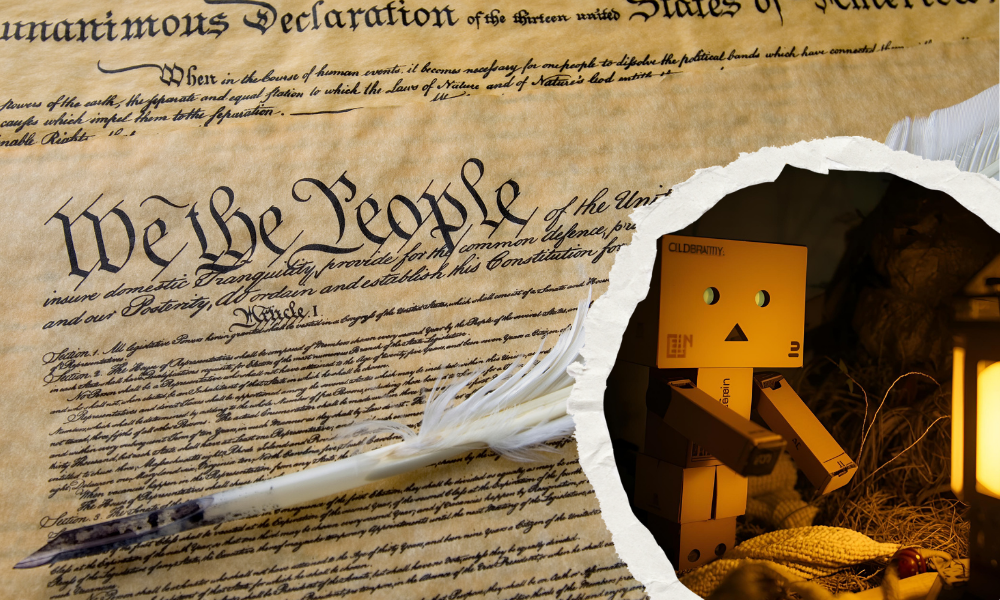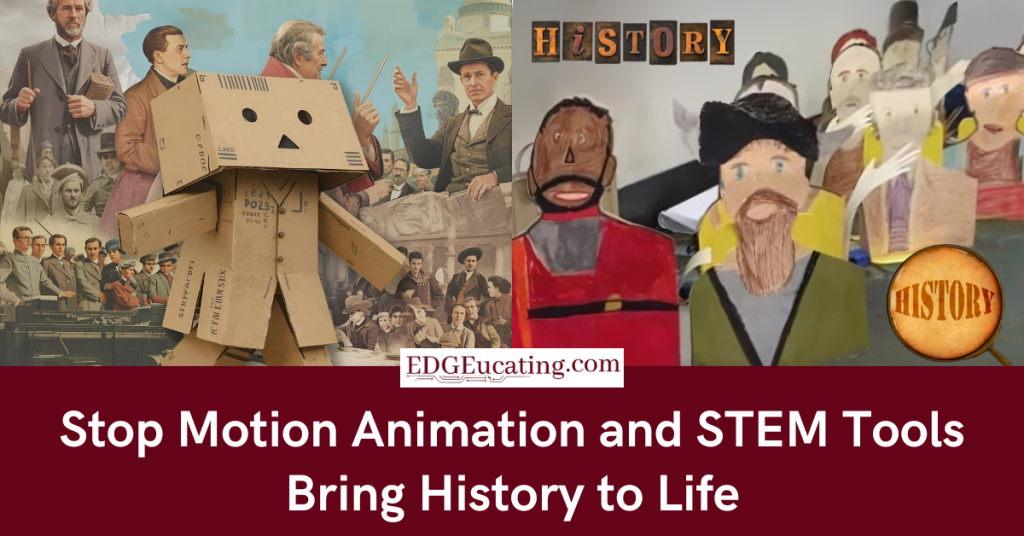Bringing history to life in the classroom doesn’t require a time machine—just a bit of creativity, a few innovative tools, and a STEM mindset. Using stop motion animation, along with hands-on resources like 3DuxDesign, Hue Animation’s stop motion studio, and the Hummingbird kit, students can explore the past through storytelling, design, coding, and engineering.
This approach doesn’t just make learning fun. It builds essential STEM skills, supports interdisciplinary, computational thinking, and deepens students’ understanding through project based learning. With the help of tools like Hue Animation Studio, Hummingbird robotic kits, and microbit for coding, students get to animate key historical events while mastering real-world problem-solving.
Why Use Stop Motion Animation in Social Studies?
Animating history through stop motion animation turns students into historians, directors, engineers, and designers all at once. With tools like Hue Animation Studio, students can create short films that reflect historical moments, using visuals and movement to retell important events.
This strategy encourages students to:
- Think critically about historical perspectives
- Retain content through active creation
- Develop computational thinking skills through coding
- Work collaboratively across roles like writer, animator, builder, and coder
- Apply STEM skills in meaningful, authentic ways
According to the Concord Consortium, integrating data-driven storytelling and interdisciplinary project based learning empowers students to connect core subjects while practicing scientific inquiry and critical thinking. This kind of learning sticks because students are fully engaged.
How to Bring It All Together: Tools for Creative STEM Lessons
Here’s a breakdown of how you can use classroom-friendly STEM tools to turn historical topics into engaging, hands-on learning experiences:
| Tool | Purpose |
| 3DuxDesign | Students use this cardboard-based architectural modeling system to build characters, buildings, and scenery. Great for constructing settings like historical battlefields, colonial towns, or historical figures. |
| Hummingbird Kit | These programmable robotic kits allow students to add motion, lights, and sound. Includes the microbit microcontroller for easy-to-learn coding and control. |
| Hue Animation Studio | A classroom-ready, stop motion animation kit that helps students capture their scenes frame-by-frame and turn them into animated historical stories. |
All of these tools support high-quality STEM lessons that can be embedded into core content like social studies or ELA. They also promote STEAM education, giving students opportunities to create, collaborate, and problem-solve.

Example Stop Motion Project: Animate a Moment in History
Here’s a simplified outline for an engaging interdisciplinary classroom project:
- Choose a Topic: Assign or let students select a historical moment to animate (e.g., the signing of the Declaration of Independence, Rosa Parks and the Montgomery Bus Boycott, or a key event from ancient history).
- Research and Plan: Students research the event and storyboard their animation. Who are the main characters? What’s the setting? What happens in each scene?
- Build with 3DuxDesign: Students use 3DuxDesign kits to create 3D cardboard models of characters, settings, and props.
- Code and Animate with Hummingbird Kit: Using the Hummingbird Kit and Microbit, students add motion—like moving arms, waving flags, or lighting effects that bring their scene to life.
- Capture with Hue Animation Studio: Students record their story using stop motion animation, capturing each small movement to build a complete animated video.
- Edit and Present: Add sound, narration, and music. Then share the final videos during a showcase or post them online for family and peers.
The Benefits of Inquiry Based Learning Goes Beyond the Lesson
This type of project based learning isn’t just about fun—it improves academic performance. A 2022 study found that students in integrated STEM programs achieved significantly higher scores in science and math than those in traditional classrooms.
Why? Because students engagement offered much deeper connections with content by utilizing design, experimentation, and iteration. In the same way, building a historical stop motion project lets students internalize historical context, exercise engineering thinking, and apply coding skills—all in one lesson.
They’re not just learning facts—they’re building meaning.
Free Teaching Resources and STEM Lessons
Getting started is easier than ever. Both 3DuxDesign and BirdBrain Technologies (makers of the hummingbird kit) offer free teaching resources and STEM lessons to help educators integrate these tools into the classroom. These materials include lesson plans, video tutorials, and classroom management tips. EDGEucating also offers FREE teaching resources, such as our Equitable Playgrounds For All lesson, and blog articles that can help you incorporate these wonderful tools.
Whether you’re new to robotics or experienced with animation, you’ll find plenty of support to launch engaging, inquiry based learning projects.
Final Thoughts on STEM Storytelling
By combining history, storytelling, and STEM education, educators can offer students more than just content—they provide experiences. With stop motion animation, 3DuxDesign, and the hummingbird kit, students become creators of knowledge, not just consumers.
This creative and interdisciplinary approach builds skills for the future—like collaboration, coding, and computational thinking—while making history come alive in the classroom.
Ready to give your next social studies unit a STEM-powered twist? Start small, use the tools and resources available, and let your students show you just how powerful their learning can be.


